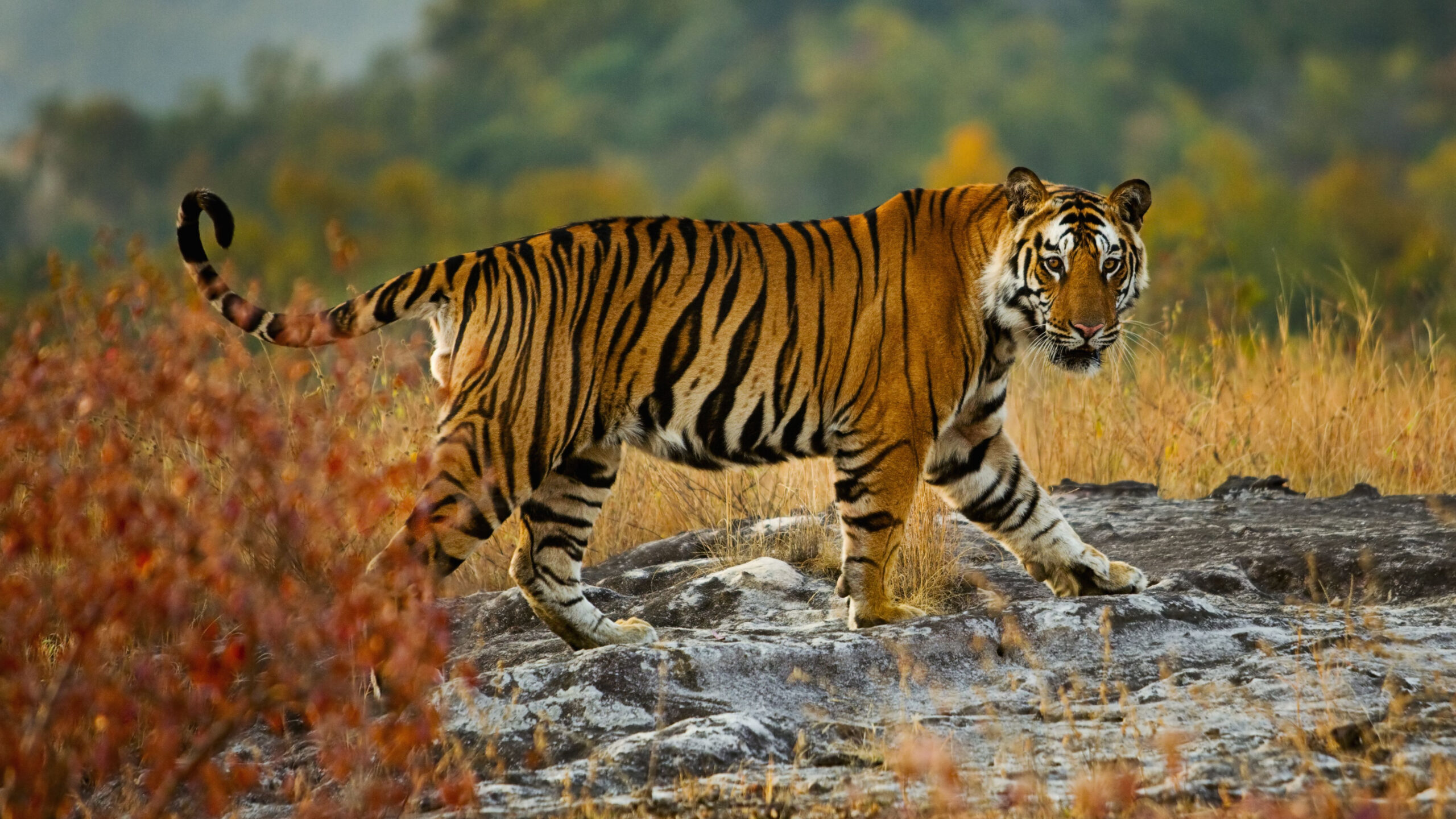Tigers are the largest big cats and the world’s second-largest mammal, behind whales. They are solitary creatures, yet they must eat every few days and hunt in pairs or groups. The tiger is known as the national animal of India.
India’s national symbols represent the country’s image and were carefully selected. The national emblems define both the country and its ethnic culture. The Royal Bengal Tiger has been chosen India’s national animal. The tiger was an important symbol in Hindu mythology and the Vedic period. It was frequently shown as Goddess Durga’s animal transport in numerous incarnations. India is home to 80 percent of the world’s tigers. India’s banknotes and postage stamps feature the Royal Bengal Tiger.
India’s National Animal
The stunning Royal Bengal Tiger is India’s national animal. Panthera tigris is the scientific name. Bengal Tigers have a thick golden coat with dark stripes and are striped animals. The Royal Bengal tiger is a symbol of strength, beauty, and agility. The Royal Bengal Tiger is beautiful, regal, and ferocious all at once, making it one of India’s most recognizable carnivores. It is known for its strange and unique qualities, which set it apart from the rest of India’s wild animals. Because of these features, it has been known as India’s national animal.
Where Can You Find India’s National Animal: Location
The national animal of India is predominantly found in the following locations.
There are two types of land: grasslands and dry scrub land (Ranthambore, Rajasthan).
Tropical and subtropical rainforests (Corbett, Uttarakhand; Periyar, Kerala)
Sundarbans (Mangroves)
Kanha in Madhya Pradesh and Simlipal in Odisha feature wet and dry deciduous forests.
A Tiger’s Life Expectancy
In the wild, a Bengal tiger lives for an average of 8 to 10 years.
The wild specimen has a maximum longevity of about 15 years.
Few tigers can live in the wild for more than 15 years because they become too weak to hunt large animals.
Bengal tigers can live 18 to 20 years in captivity.
Project Tiger
By 1973, the tiger population was dwindling at an alarming rate. As a result, in April 1973, Project Tiger was launched to preserve the royal and majestic animal. The Project Tiger aims to rescue tigers from extinction by preserving biologically valuable sites as natural heritage for all time, representing as closely as possible the diversity of ecosystems found across the country’s tiger territory.
The Royal Bengal Tiger is India’s national animal, having been named so in April 1973.
Project Tiger was founded in 1973 under Prime Minister Indira Gandhi to protect India’s losing tiger population.
Kailash Sankhala was the first director of Project Tiger.
Before 1973, the lion was considered India’s national animal.
Project Tiger now oversees 50 tiger reserves in India.
Why was the tiger chosen India’s national animal?
The tiger was chosen as India’s national animal due to its grace, strength, agility, and immense power. On April 1, 1973, the government started Project Tiger to save tigers. It was launched from Uttarakhand’s Jim Corbett National Park.
A national animal of India is one of the most easily identifiable symbols of a country’s natural resources. The national animal is chosen based on a number of factors. The first is how well it represents the particular characteristics that a country wishes to be associated with.
The national animal of India should have a long history as a symbol of the country’s traditions and values. Within the country, the national animal should be widely distributed. Ideally, a national animal should be native to the country and intrinsic to its culture. The national animal is chosen based on its conservation status, allowing for greater efforts to maintain its long-term survival as a result of its official position.
Conclusion
Panthera tigris, the beautiful tiger, is a striped animal. It has a thick, golden fur coat with dark lines. The tiger’s grace, strength, agility, and tremendous power have earned it the status of India’s national animal. The Royal Bengal Tiger, an Indian species, is found across the country with the exception of the northwestern region, as well as in neighboring Nepal, Bhutan, and Bangladesh. Project Tiger was launched in April 1973 to help India’s decreasing tiger population. This project has resulted in the formation of 27 tiger reserves around the country, covering a total of 37,761 square kilometers.
Also Read : The National Tree of India | Complete Guide
